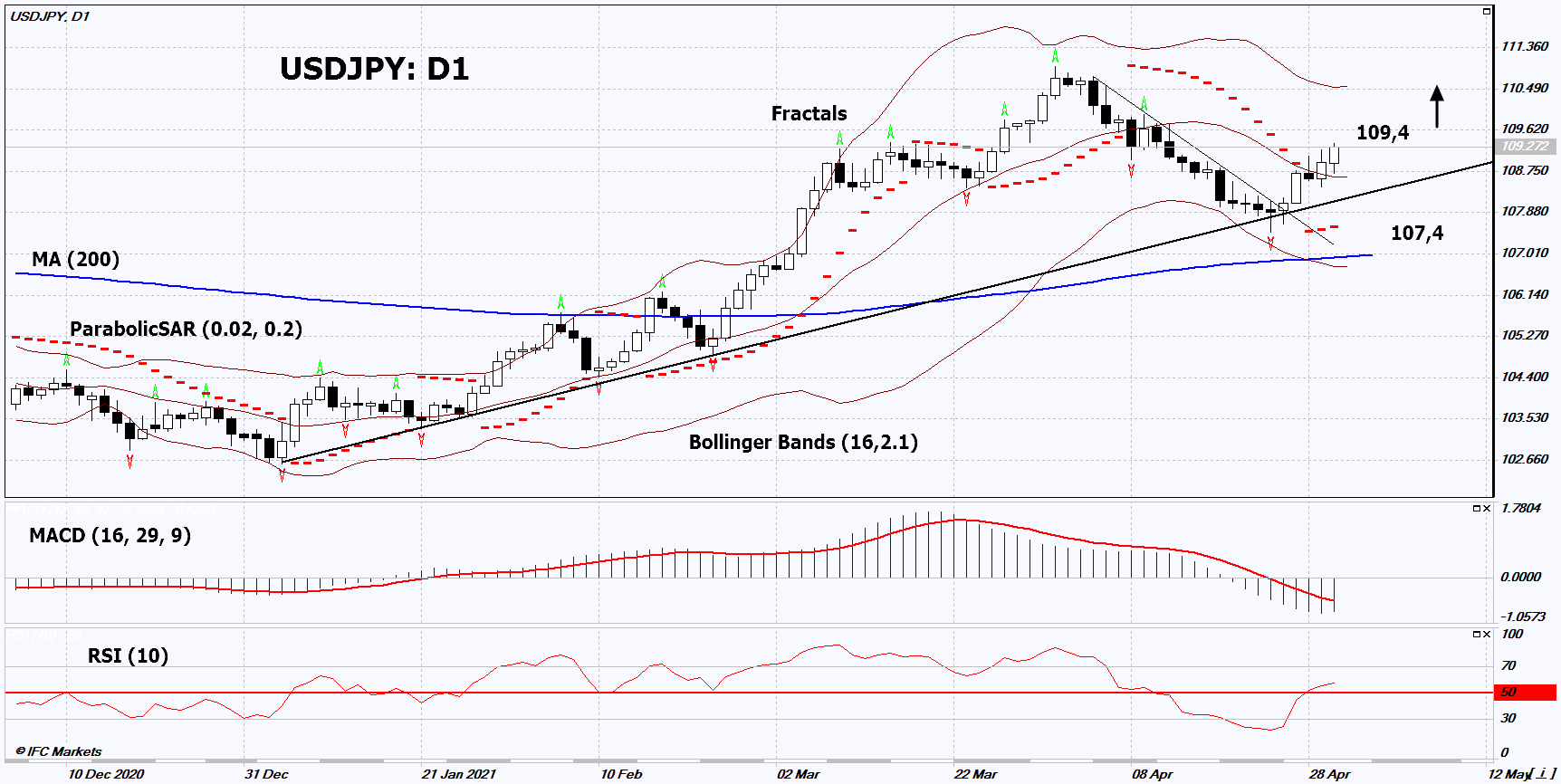- 分析
- 技术分析
USD/JPY 技术分析 - USD/JPY 交易: 2021-05-03
USD/JPY 技术分析总结
高于 109,4
Buy Stop
低于 107,4
Stop Loss
| 指标 | 信号 |
| RSI | 中和 |
| MACD | 卖出 |
| MA(200) | 中和 |
| Fractals | 中和 |
| Parabolic SAR | 买进 |
| Bollinger Bands | 买进 |
USD/JPY 图表分析
USD/JPY 技术分析
On the daily timeframe, USDJPY: D1 exceeded the downtrend resistance line. A number of technical analysis indicators formed signals for further growth. We do not rule out a bullish move if USDJPY rises above its latest high: 109.4. This level can be used as an entry point. We can place a stop loss below the Parabolic signal and the last lower fractal: 107.4. After opening a pending order, we can move the stop loss to the next fractal low following the Bollinger and Parabolic signals. Thus, we change the potential profit/loss ratio in our favor. After the transaction, the most risk-averse traders can switch to the four-hour chart and place a stop loss, moving it in the direction of the bias. If the price meets the stop loss (107.4) without activating the order (109.4), it is recommended to delete the order: the market sustains internal changes that have not been taken into account.
外汇交易 基本面分析 - USD/JPY
Japan deflation persists. Will the yen keep weakening?
This trend on the USDJPY chart looks like an increase. The Bank of Japan (BoJ) meeting took place last week. BoJ kept the rate (-0.1%) unchanged and announced the money issue will be continued for asset buyback in anticipation of inflation rising to 2% by 2023. This noticeably weakened the yen, since at the end of March this year Japan deflation, or negative inflation, of -0.2% was recorded for the 6th month in a row. On Friday, Tokyo released data on inflation for April, which turned out to be negative not only for the 7th month in a row but also showed the maximum decline (-0.6% yoy) in 2021. Now investors expect deflation to persist throughout Japan in April. The data is due out on May 20. Some investors do not even rule out additional easing of BoJ's monetary policy. The US dollar, on the contrary, strengthened due to positive macroeconomic data in the USA. In particular, Q1 GDP growth exceeded forecasts and amounted to 6.4%. In March, the Personal Consumption Expenditure Price Index rose markedly. Earlier, the Fed announced a tightening of its monetary policy in case of clear signs of economic recovery after the pandemic.
附注:
本文针对宣传和教育, 是免费读物. 文中所包含的信息来自于公共渠道. 不保障信息的完整性和准确性. 部分文章不会更新. 所有的信息, 包括观点, 指数, 图表等等仅用于介绍, 不能用于财务意见和建议. 所有的文字以及图表不能作为交易的建议. IFC Markets及员工在任何情况下不会对读者在阅读文章中或之后采取的行为负责.


